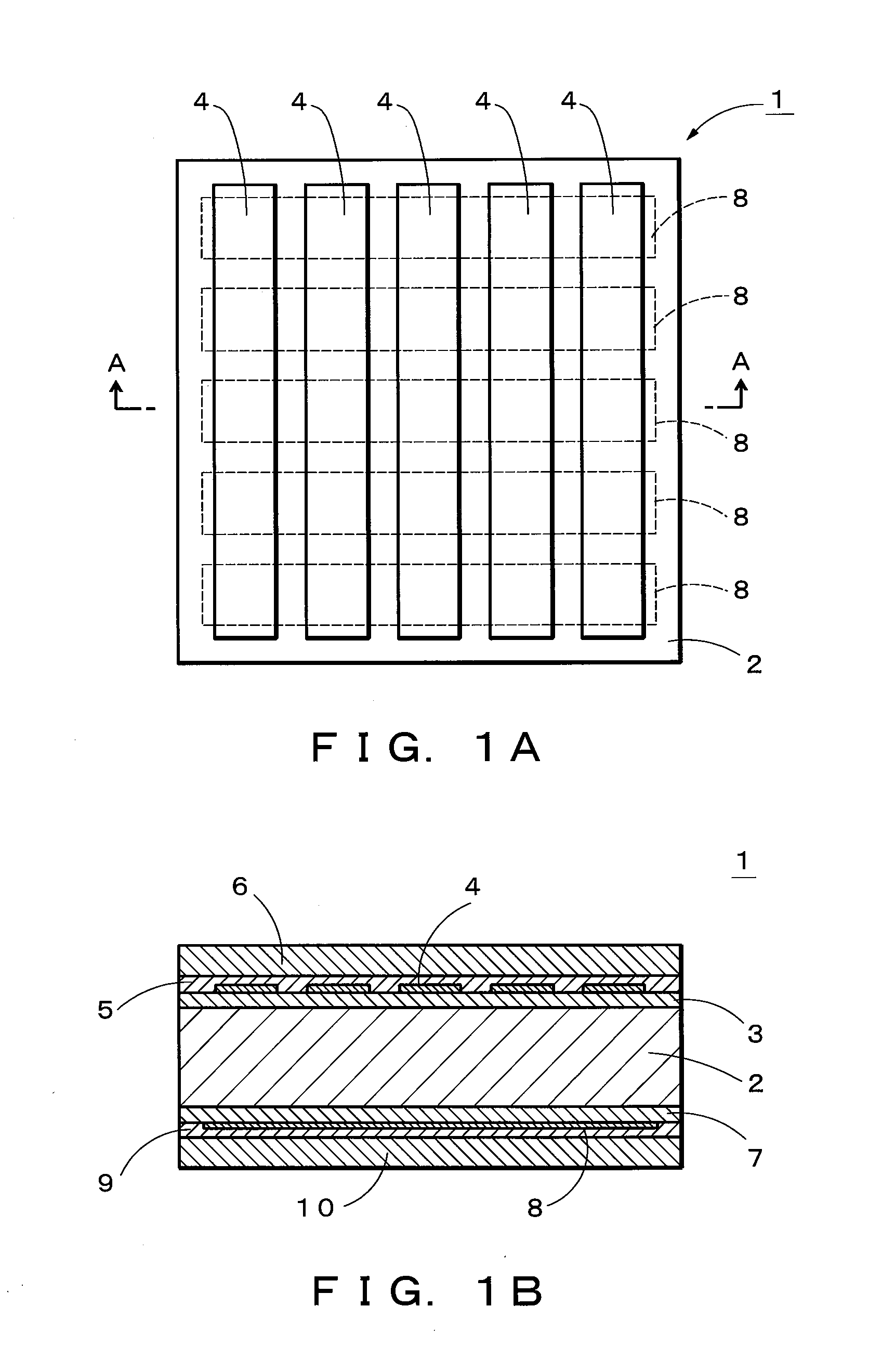Touchscreen sensor
- Summary
- Abstract
- Description
- Claims
- Application Information
AI Technical Summary
Benefits of technology
Problems solved by technology
Method used
Image
Examples
example 1
[0045]A hardcoat layer containing spherical particles of 3 μm in diameter was formed sequentially on both sides of a transparent base material made of a polycycloolefin film (manufactured by Nippon Zeon Corporation, product name ZEONOR) having a thickness of 100 μm. Thereafter, on each of the hardcoat layers, an inorganic-organic composite material (manufactured by JSR Corporation, product name OPSTAR KZ6661) in which inorganic particles are scattered in an organic component of a photosensitive monomer was applied and light cured to form the first and third index-matching layers each having a refractive index of 1.65 and a thickness of 100 nm.
[0046]Then, the transparent base material was placed in a sputtering device in which a sintered target containing indium oxide of 97% by weight and tin oxide of 3% by weight was installed, and an indium tin oxide layer having a thickness of 27 nm was formed at one side of the transparent base material by sputtering. Thereafter, a process simila...
example 2
[0050]A touchscreen sensor was fabricated with a method similar to the method of Example 1, except that a thickness of each of the first, second, third and fourth index-matching layers was 85 nm, respectively.
example 3
[0051]A touchscreen sensor was fabricated with a method similar to the method of Example 1, except that a thickness of each of the first, second, third and fourth index-matching layers was 120 nm, respectively.
PUM
| Property | Measurement | Unit |
|---|---|---|
| Thickness | aaaaa | aaaaa |
| Thickness | aaaaa | aaaaa |
| Thickness | aaaaa | aaaaa |
Abstract
Description
Claims
Application Information
 Login to view more
Login to view more - R&D Engineer
- R&D Manager
- IP Professional
- Industry Leading Data Capabilities
- Powerful AI technology
- Patent DNA Extraction
Browse by: Latest US Patents, China's latest patents, Technical Efficacy Thesaurus, Application Domain, Technology Topic.
© 2024 PatSnap. All rights reserved.Legal|Privacy policy|Modern Slavery Act Transparency Statement|Sitemap


